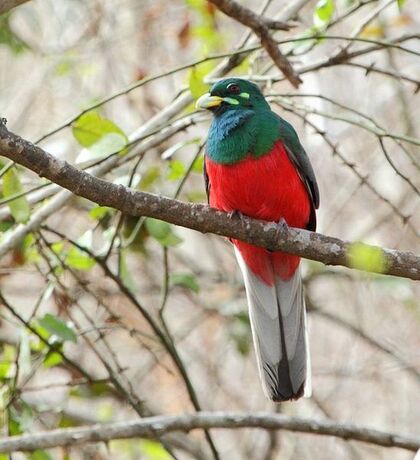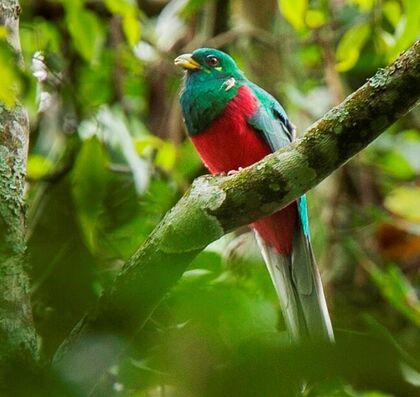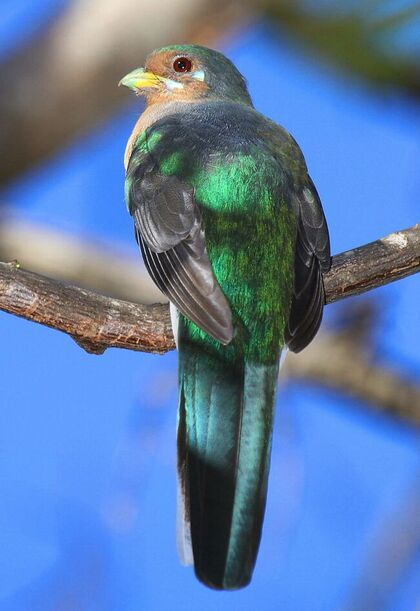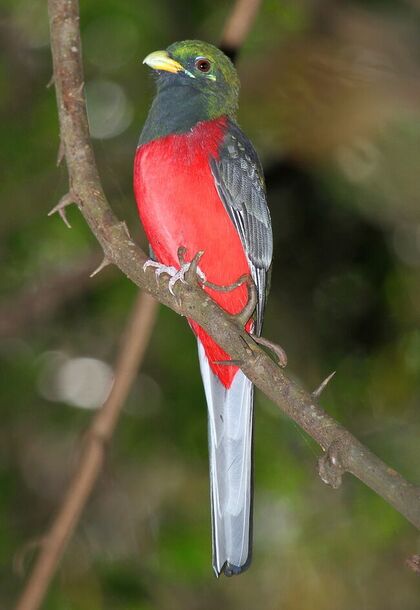Descriptiong
Regarded as one of the most desirable photos for any bird photographer, the Narina Trogon is a beautiful forest bird with a remarkable appearance. Despite being so noticable, it can be very hard to detect and is a great sighting for any birder.
Destination
The Narina Trogon can be found in wooded areas in much of Sub-Saharan Africa with a wide but fragmented range. In South Africa, the Narina Trogon lives near to the coast from the eastern cape, up to the Mozambique border and through Swaziland and the Kruger Park, and cannot be found in the highveld or in the Karoo or far Western and Northern Cape.
Where To Find
The Narina Trogon is a "Perch-and-Wait" hunter, meaning that it will normally perch high in a tree somewhere and sit extremely still waiting to find prey which it will swoop in and collect as a meal. This means that you can normally find them in well wooded areas in their range. This includes mountain and coastal forests, and thick woodland near rivers.
How To Id
The Narina Trogon is absolutely distinctive when you see it, but its habit of perching for a long time can make it difficult to spot in the trees. Its red chest sticks out, but they are known to turn their green backs towards any disturbances making them even harder to see. As such, learning their unique call in the forest can help you to locate them where you need to scan the tops of the trees carefully. They are known to sit still for up to 30 min, only occasionally moving their heads. So look carefully!
Rarity
The Narina Trogon suffers from the loss of its habitat through deforestation of indigenous forests and much of its viable range is in protected areas. This fact, combined with its camouflaged plumage and secretive habits make it a rare sighting. And when sighted, they often disappoint photographers as they are obscured by the foliage in which they sit. A rare sighting, and even rarer photograph.
Book Now
The Narina Trogon is one of the most sought after birds in the region due to its beautiful striking plumage. But it can be difficult to get sight of, so it is recommended to get a BirdLife accredited guide to help you locate. Junior Gabela is an expert on this bird and knows its habitat, behaviour and specific nesting sites. If you wish to see it, make a booking and add it to your wishlist, and he will be sure to give you the best chance.




